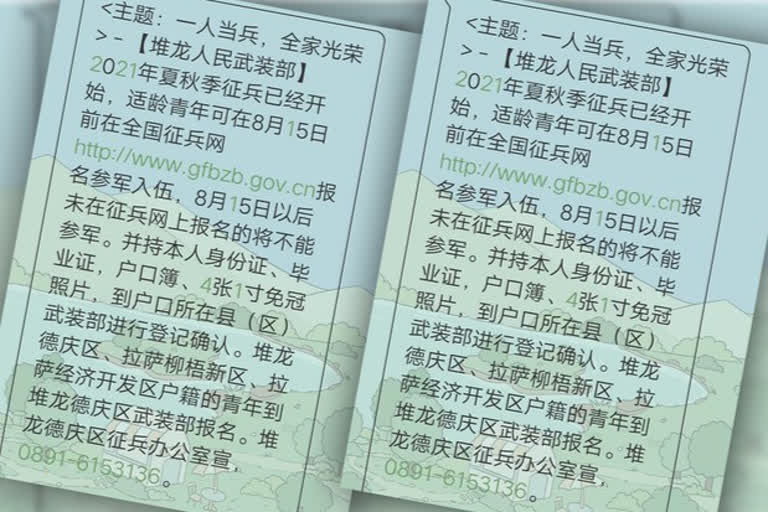New Delhi: The Chinese government has been sending a flurry of text messages on mobile phones to Tibetan youth aged between 18-21 years in the Tibetan Autonomous Region (TAR) prompting them to get military training for two years in lieu of refunds of their high school and college fees for two years, Tibetan media has reported.
Militarily-trained youth can veritably be the “eyes and ears” for the Peoples Liberation Army (PLA) on the high-altitude and sparsely-populated India-China border.
The enrolment is compulsory for students of government-aided educational institutions and the youth will be allowed to continue their studies after the completion of the two-year military training stint. While military training is part of the high school and college curriculum, this is the first time the government is offering doles in form of a refund. The last date for applying for the two-year military training course has been fixed for Sunday (August 15).
The Chinese move to encourage Tibetan youth is interesting in the backdrop of the ensuing tension with India across the Line of Actual Control (LAC), the de facto border between India and China.
The Indo-China border straddles five Indian states—Arunachal Pradesh (1,126 km), Uttarakhand (345 km), Jammu and Kashmir (1,597 km), Himachal Pradesh (260 km) and Sikkim (198 km)—with large un-demarcated stretches where there is no common agreement where the border actually lies.
The disagreement has led to many conflicts with the latest one that began in April-May 2020 yet to be resolved despite efforts at various levels.
READ: China hits out at US, India with 'rights' white-paper
Besides leading to a few brutal skirmishes, including the worst one at Galwan Valley on June 15, 2020, which claimed the lives of at least 25 soldiers on both sides, India and China have mobilized about 1,00,000 soldiers and military hardware on both sides of the LAC in eastern Ladakh.
With most of the border located in very mountainous high altitude terrain and an extremely hostile weather pattern with very cold winters and oxygen-depleted air, deployment of troops has been a challenge for both India and China.
While India has deployed Tibetan-origin soldiers from the shadowy Special Frontier Force (SFF) who have given a very account of themselves in recent military operations in eastern Ladakh, China’s largely Han-dominated PLA has found the going difficult, prompting emergency efforts to prepare and deploy local Tibetan youth who are naturally-endowed mountain fighters.
While reports have also come in of the Chinese government encouraging more Tibetans to join the PLA, of late, Beijing has been on the overdrive to placate Tibetans.
On July 22, China president Xi Jinping undertook a sudden visit to Lhasa and Nyinchi—his first after assuming the reins of the country’s leadership and 70 years after the so-called “peaceful liberation” of Tibet by Mao Tse Tung-led China. In both places, Xi interacted with the public besides meeting local officials and leaders in the very widely publicised trip.



